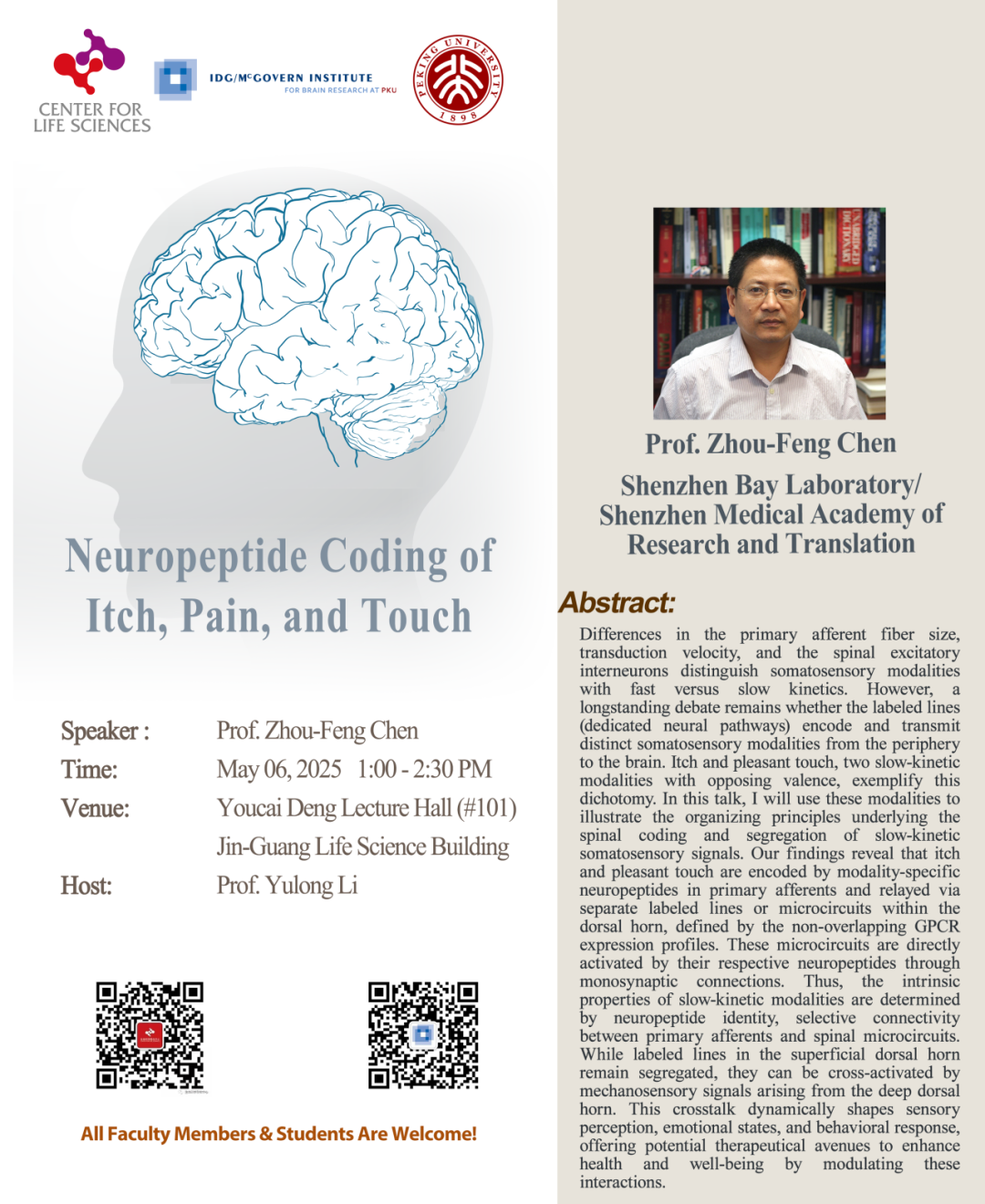Speaker: Prof. Zhoufeng Chen, Shenzhen Bay Laboratory, Shenzhen Medical Academy of Research and Translation
Time: 13:00-14:30 p.m., May 6, 2025, GMT+8
Venue: Youcai Deng Lecture Hall (#101), Jin-Guang Life Science Building
Abstract:
Differences in the primary afferent fiber size, transduction velocity, and the spinal excitatory interneurons distinguish somatosensory modalities with fast versus slow kinetics. However, a longstanding debate remains whether the labeled lines (dedicated neural pathways) encode and transmit distinct somatosensory modalities from the periphery to the brain. Itch and pleasant touch, two slow-kinetic modalities with opposing valence, exemplify this dichotomy. In this talk, I will use these modalities to illustrate the organizing principles underlying the spinal coding and segregation of slow-kinetic somatosensory signals. Our findings reveal that itch and pleasant touch are encoded by modality-specific neuropeptides in primary afferents and relayed via separate labeled lines or microcircuits within the dorsal horn, defined by the non-overlapping GPCR expression profiles. These microcircuits are directly activated by their respective neuropeptides through monosynaptic connections. Thus, the intrinsic properties of slow-kinetic modalities are determined by neuropeptide identity, selective connectivity between primary afferents and spinal microcircuits. While labeled lines in the superficial dorsal horn remain segregated, they can be cross-activated by mechanosensory signals arising from the deep dorsal horn. This crosstalk dynamically shapes sensory perception, emotional states, and behavioral response, offering potential therapeutical avenues to enhance health and well-being by modulating these interactions.
Source: McGovern Institute for Brain Research at PKU
